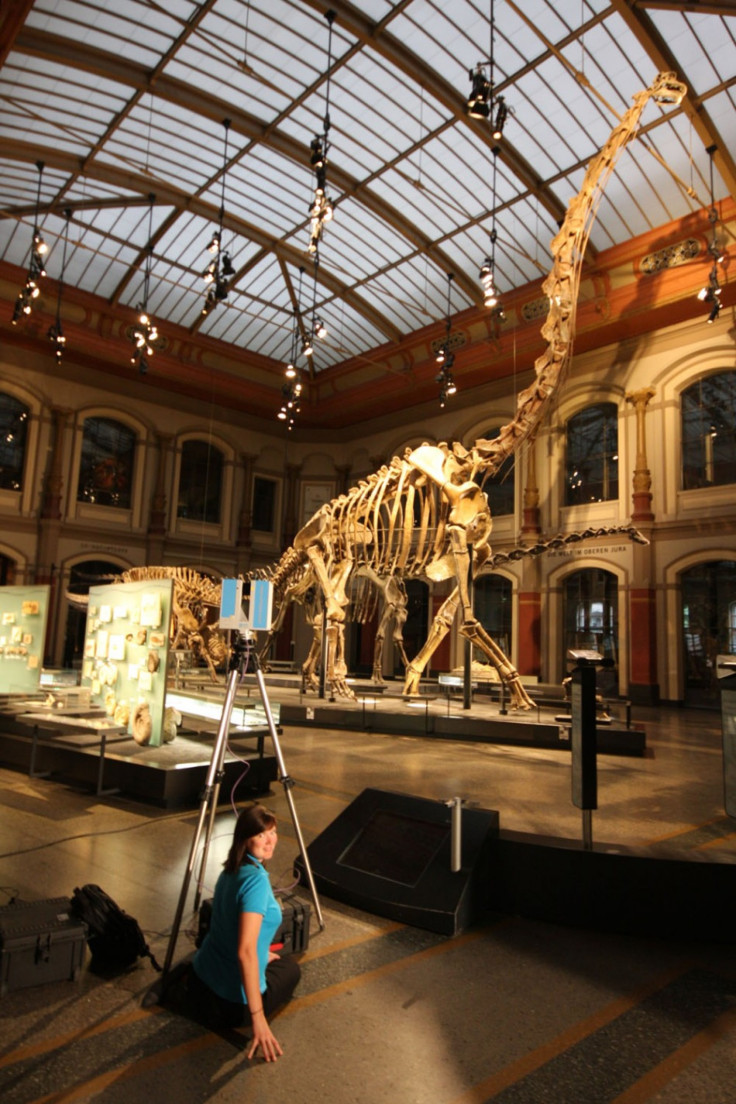Dinosaurs Are The Biggest Losers: New Laser Weigh-In Method Finds Prehistoric Creatures Were Lighter Than We Thought

The biggest dinosaur specimen in the world has shed a few pounds.
Using a new method of calculating body weight using a laser scanner, a research team led by University of Manchester biologist Bill Sellers says that the Giraffatitan brancai displayed in Berlin's natural history museum -- a 41-foot-tall sauropod skeleton -- weighed around 23,000 kg (25 tons) in life, instead of 50 to 80 tons as previously estimated.
One of the most important things paleobiologists need to know about fossilized animals is how much they weighed, Sellers said in a statement on Tuesday.
Knowing the size of an animal can yield a wealth of insights into its lifestyle: how often it reproduced, how fast it moved, how far they ranged and how much food it needed to eat to maintain its metabolic rate.
Giraffatitan isn't the only prehistoric creature that was probably lighter on its toes than previously estimated. In a new study appearing in the journal Biology Letters on Tuesday, the scientists say their method should apply to most other dinosaurs.
Sellers and his team first scanned 14 large mammal skeletons, including a bison, giraffe, polar bear and an elephant. They calculated the minimal volume of the animal based on the least amount of skin that would wrap around that skeleton. When the researchers compared that 'skin and bones' model to the known weight of the animals, there was a consistent pattern: the actual weight was 21 percent heavier than the simplified model.
From there, it was a relatively simple matter to scan Giraffatitan's bones, build a simple model, and add 21 percent more weight to flesh it out.
Other models may have overestimated dinosaur weights because their calculations were based on extrapolating from a single bone.
The team says their laser-based volumetric method is better because it uses the full information from the fossil skeleton and therefore avoid[s] the single bone problem, where a species or an individual has limbs of unusual size that can lead to large errors in estimating body mass.
© Copyright IBTimes 2025. All rights reserved.




















